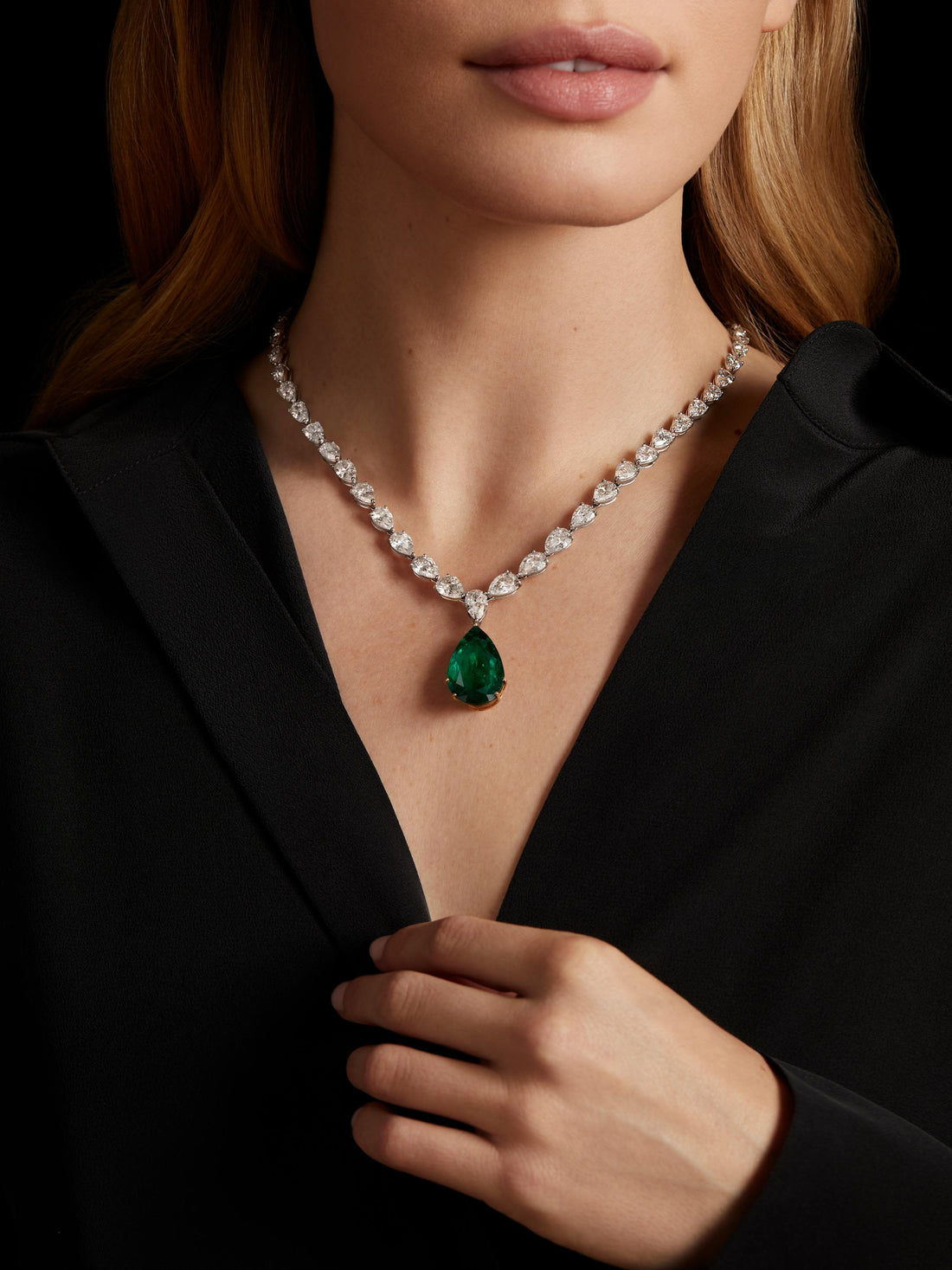
The Evolution of Jewellery: From Ancient Adornments to Modern Masterpieces
Share
Jewellery has accompanied humanity for millennia, serving as a symbol of power, devotion, identity, and artistry. From the earliest shells and stones worn as talismans to today’s high-jewellery creations, the story of jewellery is inseparable from the history of culture and civilization itself.
Origins: Rituals and Protection
The earliest known jewellery dates back more than 100,000 years, when prehistoric humans fashioned beads from shells and bones. These primitive ornaments were not merely decorative; they carried spiritual meaning, believed to protect the wearer or connect them with ancestral forces.
Antiquity: Symbols of Power and Status
In ancient Egypt, jewellery became a vital expression of wealth and divine protection. Gold, considered the flesh of the gods, adorned pharaohs and priests, while turquoise, lapis lazuli, and carnelian conveyed symbolic meaning. In Greece and Rome, jewellery was also a sign of citizenship and social order.
Though the great maisons of jewellery had not yet been founded, the techniques developed in these civilizations—stone carving, enameling, filigree—laid the groundwork for the artistry later perfected by houses like Cartier, Boucheron, and Chaumet.
Middle Ages: Faith and Heraldry
During the medieval period, jewellery reflected Christian devotion and noble identity. Crosses, reliquaries, and gem-encrusted crowns became symbols of divine right and power. Signet rings carried coats of arms, serving both as seals and as marks of status.
Later, jewellers who would establish dynasties—such as Chaumet (founded in 1780 but with roots in French court jewellery)—built on this tradition of serving the elite.
Renaissance to Enlightenment: Artistry and Innovation
The Renaissance revived classical ideals and spurred innovation in goldsmithing and gemstone cutting. Gemstones were arranged in more complex settings, while enameling reached new artistic heights.
By the 18th century, Mellerio dits Meller (1613) and Chaumet catered to European courts, with queens and empresses commissioning bespoke creations. These houses laid the foundations for jewellery as both fine art and social statement.
19th Century: Romanticism and Sentimentality
The Victorian age embraced jewellery as an expression of love, memory, and sentiment. Lockets, brooches, and mourning jewellery became personal treasures.
It was also the century that saw the rise of legendary houses:
Cartier (1847) in Paris, redefining elegance and technical brilliance.
Boucheron (1858), famed for bold designs and exquisite gemstones.
Tiffany & Co. (1837) in New York, pioneering the engagement ring as we know it today.
Chopard (1860) evolved from fine watchmaking into high jewellery, gaining fame with its iconic Happy Diamonds collection. Today, it is celebrated worldwide for its creativity and its pioneering commitment to ethical gold and sustainable luxury.
Piaget (1874) is renowned for its ultra-thin watch movements and its bold jewellery watches that blend horology with artistry. The maison’s creations, from colorful hardstone dials to the playful Possession line, embody elegance, innovation, and glamour.
Buccellati (1919) later added Italian refinement to the jewellery landscape.
Industrialization democratized jewellery, but these maisons ensured that true artistry remained synonymous with luxury.
20th Century: Design Movements and Modernity
The 20th century transformed jewellery into wearable art.
Art Nouveau (1890–1910) saw houses like René Lalique create ethereal pieces inspired by nature.
Art Deco (1920s–30s) brought bold geometry and vibrant contrasts, embodied by Cartier, Van Cleef & Arpels (founded 1906), and Bulgari (1884).
Post-war glamour was defined by diamonds, with Harry Winston (1932) becoming the “King of Diamonds.”
Each brand became known for its signature:
Cartier – the Panthère, mystery clocks, Tutti Frutti jewels.
Van Cleef & Arpels – the Alhambra motif and invisible settings.
Bulgari – bold colors and Serpenti designs.
Tiffany & Co. – the Tiffany Setting engagement ring, timeless silver collections.
Contemporary Jewellery: Identity, Innovation, and Sustainability
Today, jewellery reflects individuality, artistry, and ethics. The great maisons continue to thrive, while new independent designers explore bold concepts.
Chopard (1860) emphasizes sustainability with its “Journey to Sustainable Luxury” and ethically sourced gold.
De Beers redefines diamond jewellery with modern transparency and responsible sourcing.
Graff (1960) remains synonymous with some of the world’s rarest diamonds.
Bulgari, Cartier, Van Cleef & Arpels push design boundaries while honoring their heritage.
At the same time, contemporary artisans experiment with recycled metals, lab-grown gems, and sculptural forms, ensuring that jewellery remains both timeless and forward-looking.
From sacred amulets to avant-garde creations, jewellery has always transcended ornament. With the rise of iconic maisons—Cartier, Tiffany, Van Cleef & Arpels, Bulgari, Chopard, Piagt, Harry Winston, Graff—jewellery became both art and legacy, a reflection of human culture and aspiration. Today, as the industry embraces sustainability and personalization, jewellery continues to dazzle, carrying with it thousands of years of history and a promise of eternal beauty.






